All part of a healthy, balanced diet
For amateur and recreational athletes, trying to work out how best to train all the various aspects of physical performance can be like trying to solve a Rubik’s cube. You try to increase your strength work but that might negate from your fitness. You try to work on your muscular endurance but find that your explosive power might start to dip. This puzzle is still difficult for professional S&C coaches to work out with all their experience and knowledge. There is no perfect balance for all athletes of all sports. For some sports such as long-distance running it can be easier to manage. Team sports such as those in the GAA, soccer, hockey and rugby can be very difficult to manage optimally throughout a long season for athletes with varying levels of ability and experience and with limited coaching hours.
Where your gym programme lies within the overall season/year should help to guide the overall goal for that programme. As a rule of thumb, the pre-season would be when you typically expose the athletes to a high training load to maximise the strength/hypertrophy and fitness adaptations while you don’t have to worry about being fresh for competitive action. Once you have developed sufficient maximum strength levels, you can then look to work on the power aspect of training. You’ve got the muscle fibres bigger and more of them firing at once. Now it’s about getting them to fire as quickly as possible. This will be what separates good athletes from great athletes. Of course, there is an element of some athletes being more genetically predisposed to being fast but the human body is very adaptable so there’s always room for improvement.
The force-velocity curve as seen in the figure below is a very simplistic model for determining the training effect of a gym exercise. A heavy squat close to an athlete’s one repetition maximum effort (1RM) would typically be a very slow movement with a lot of force involved (at the top left of the graph). Exercises that can be done for a high amount of reps before fatigue can usually be done much quicker than the heavy squat so will live close to the bottom right of the graph. Hurdle hops or box jumps would be completed much faster than the squat but as you are still pushing your bodyweight against gravity, these will live somewhere in the middle depending on your strength levels. Most of the content of a gym programme will typically live in between the two extremes of maximum strength and maximum speed.
Although the external force of the barbell/hex-bar or gravity can slow down the movement, if the athlete’s intention is to move as fast as possible, there will be some power development. So even when you are pushing the prowler at a snail’s pace across the floor, try to do it as fast as you can. Similarly, when you are doing medball slams, if your intention is not to put as much force into the movement as possible, then you will not get a training effect from the exercise. Moderate effort gets moderate results.
Not all power exercises are created equally. They will all live somewhere along the force-velocity curve. Weighted barbell squat jumps will be closer to the left-hand side of the curve. Band-assisted squat jumps would be closer to right-hand side of the curve. Both of these exercises would belong in the family of vertical force production. For horizontal force production, prowler pushes will live closer to the strength side of the curve, while band-assisted broad jumps are all about speed. Exercises such as the landmine press, the push press and medball throws all involve large amounts of force production from the legs but start to involve the upper body more and more. Adjusting the external force for these exercises will determine the training effect gained. Having a variety of exercises along the whole of the curve is the best way to optimise your power for sport.
Physiotherapists and S&C coaches are constantly trying to get the message across to athletes that a balanced S&C programme will be beneficial to athletes to reduce their injury risk and improve their performance. The science backs it up but we are still fighting to get that message across to the masses. In very basic terms, strength will make you more robust and get injured less, and being powerful will get you to the ball quicker than your opponent. Simple as that really.





